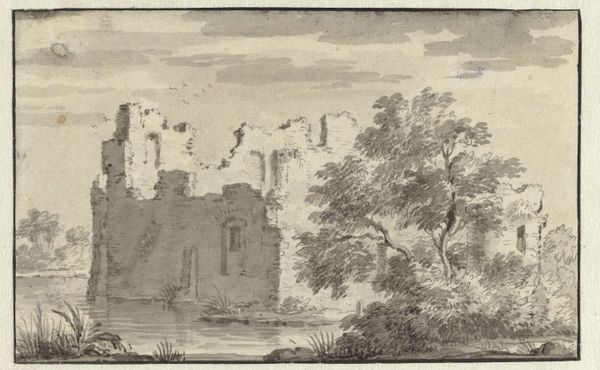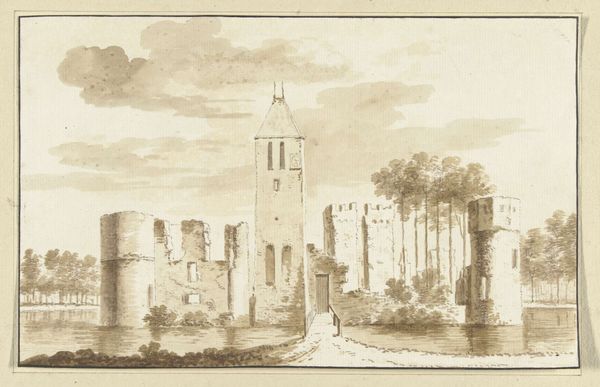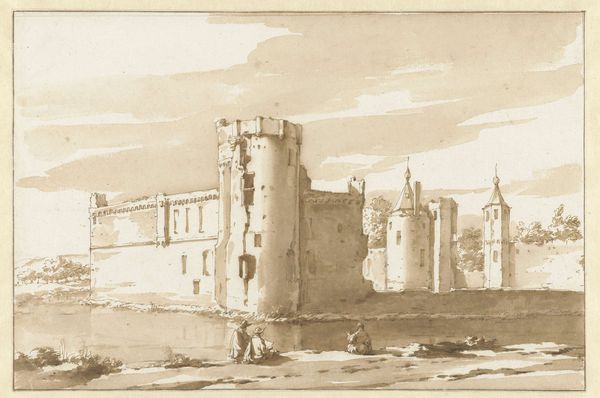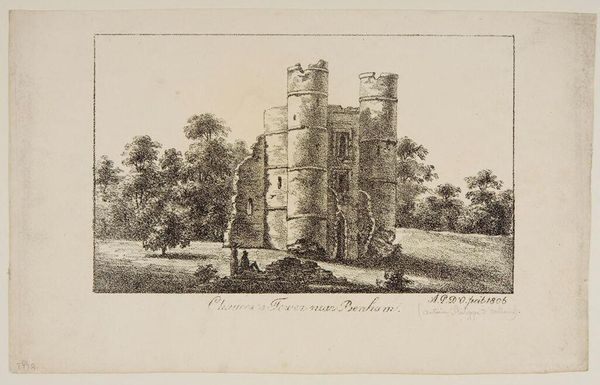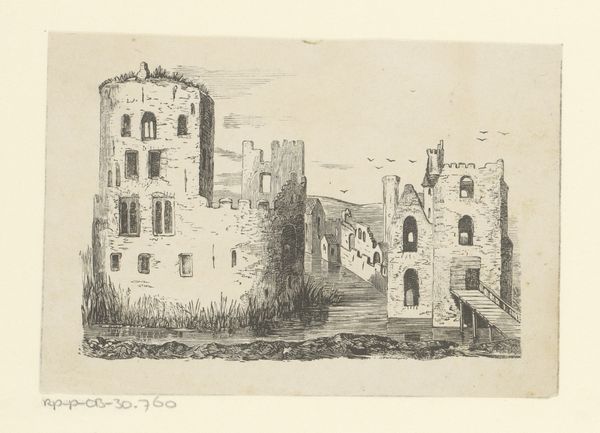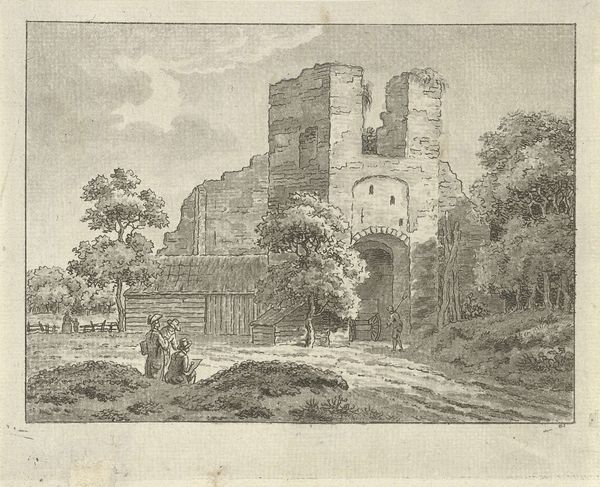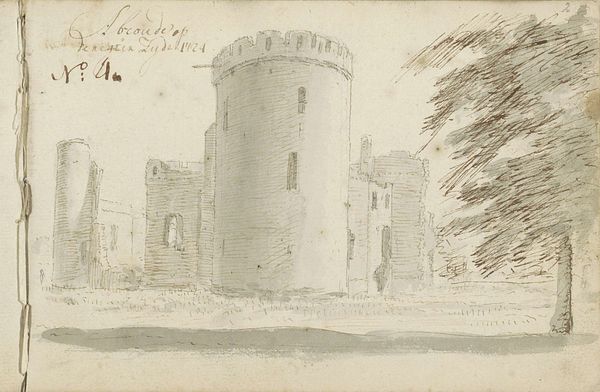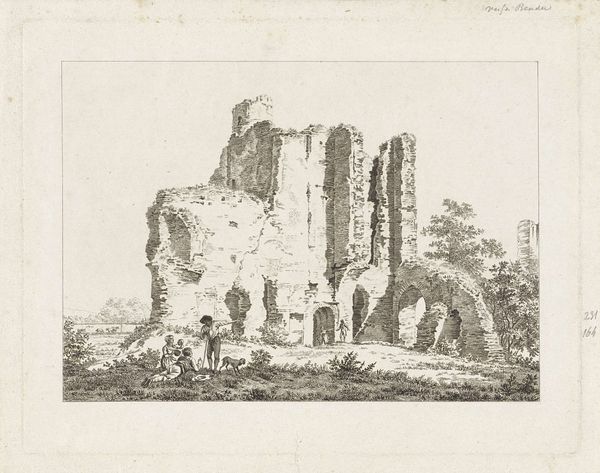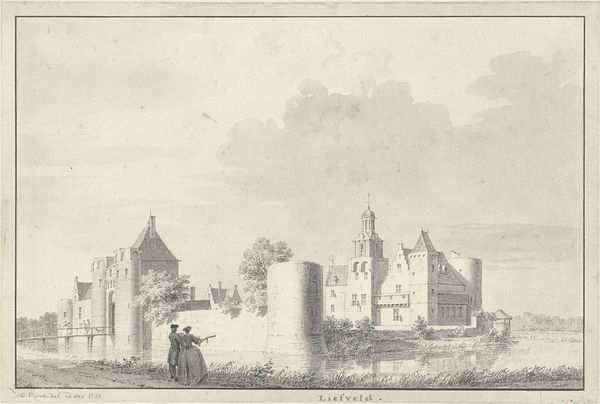
drawing, paper, ink
#
drawing
#
baroque
#
landscape
#
paper
#
ink
#
cityscape
#
history-painting
Dimensions: height 152 mm, width 242 mm
Copyright: Rijks Museum: Open Domain
Curator: Here we have Abraham Rademaker’s drawing, "Ruin of Egmond Castle, South Side," dating roughly from 1685 to 1735, rendered in ink on paper. Editor: It’s so serene, almost melancholic. The sepia tones give it a dreamlike quality, even though it depicts decay. The towers are like skeletal fingers reaching for the sky. Curator: Rademaker was part of a trend documenting historical sites, but his process interests me. Drawings like these served as preparatory sketches for engravings. So the materiality itself embodies a journey, transforming observation into reproducible form. Editor: Absolutely. And this decay, the literal dismantling of structures, prompts questions about power. Who tore these walls down, and what societal shifts did that destruction signify? The tiny figures in the foreground only underscore that sense of history being weathered by the times. Curator: There's also a real market at play. These weren't simply historical documents, but commodities. Rademaker, working during a time when the Dutch art market was shifting, was very savvy about making visually interesting work. The drawing, while ostensibly about history, becomes something designed for consumption. Editor: It brings to mind similar power struggles, but with contemporary applications. We might consider the legacies of colonialism that manifest through architecture in formerly occupied lands or through social and racial housing inequities. Curator: The composition cleverly contrasts human-made structures with nature's relentless reclamation. Even on paper, the material evidence of that negotiation resonates. Rademaker’s lines illustrate not just buildings, but social transformation and human intent in shaping our world. Editor: In short, even what we consider aesthetic choices are very much interwoven with larger cultural landscapes and should be assessed under the scrutiny of justice, labor and politics. Curator: Indeed, and by recognizing how these themes intersect, we deepen our own understanding. Editor: This work provides fertile ground to challenge existing cultural canons.
Comments
No comments
Be the first to comment and join the conversation on the ultimate creative platform.
